Enceladus: The Best Chance For Extraterrestrial Life in Our Solar System
I last wrote about the possibility of life on Jupiter's moon, Europa. But astrobiologists believe that there is one place in our own solar system that has a better chance for extraterrestrial life - Enceladus.
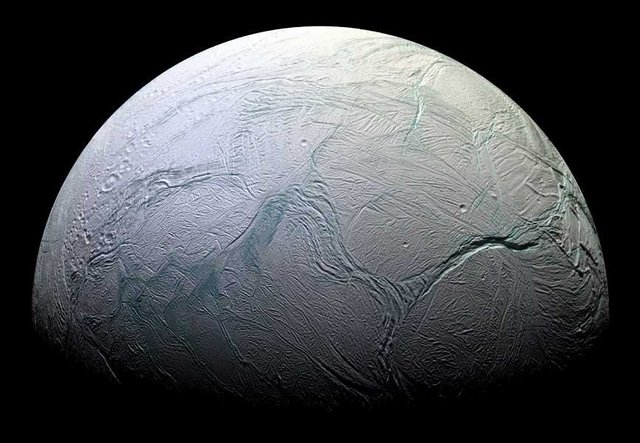
Enceladus is a small moon of Saturn, its diameter is only 314 miles (505km), and was discovered in 1789 by William Herschel. It is completely covered in ice and this makes it one of the most reflective bodies in our solar system, it reflects 99% of the sunlight that manages to reach it. This reflectivity also makes it colder than it would be otherwise, with a temperature that reaches -330F (-200C). But curiously it also has a very high probability of a saltwater ocean beneath that icy surface.
When the Cassini probe photographed Enceladus in 2005 it discovered ejections of water vapor. Further, it was able to pass through and analyze that vapor and it indicated a salinity of up to 2%, a pH level between 11-12, as well as organic compounds and complex chemicals.
Measurements of its gravity, the first time gravity has been used to detect an ocean, indicated that it was not solid ice down to its core but liquid water, since water is denser than ice. Add in the data from the plumes and this has led scientists to believe that the southern hemisphere of Enceladus has a salty ocean, underneath its 19-25 mile thick icy outer shell, that is 6 miles deep. Further, they can’t rule out that the ocean could cover the entire moon.
The Vapor Plumes
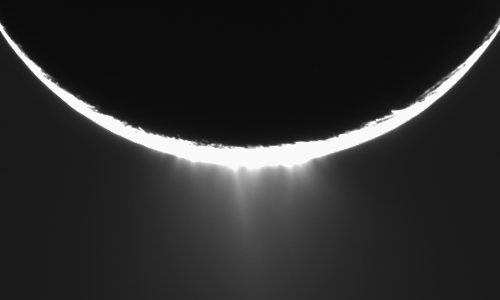
What is believed to cause the ejections is the presence of methane in the ocean causing it to rise out of over 100 identified geysers. Enceladus has been ejecting matter at an average of 440lb (220kg) per second and while some of it falls back to the moon as snow, the rest of the matter is thought to be the main reason for Saturn’s E ring.
Enceladus orbits in the middle of the most dense area of the E ring, Saturn's largest, and the ring is made up of microscopic dust and icy particles - the same material as is ejected by the geysers.The plumes have been analyzed and shown to contain nitrogen, methane, ammonia, carbon monoxide, carbon dioxide, propane, acetylene, and formaldehyde in addition to the sodium-water vapor.
The Ocean
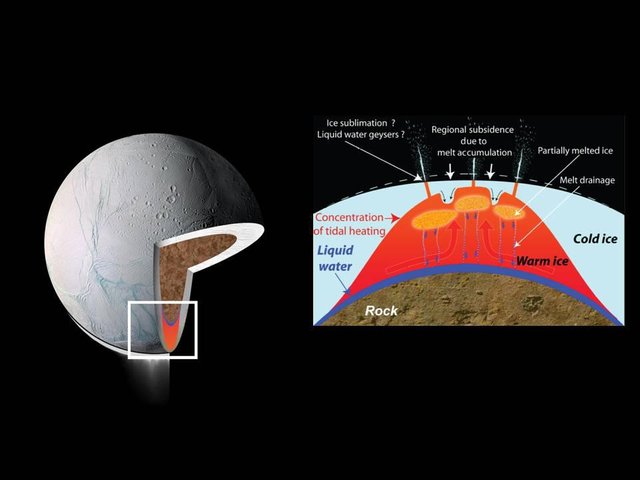
For the vapor to contain those elements it must flow along a rocky mantle to pick them up. If the water is contacting the rocky core of the moon, then there is the possibility of hydrothermal vents interacting with the ocean similar to the “Lost City” in the Atlantic ocean. What occurs there is ‘serpentinization’, in which metallic rocks can be transformed into new minerals as well as creates molecular hydrogen.
"Molecular hydrogen can both drive the formation of organic compounds like amino acids that may lead to the origin of life, and serve as food for microbial life such as methane-producing organisms," study lead author Christopher Glein
The size of the silica grains obtained from the plumes were between 4-16 nanometers wide. This size could only be reached by specific conditions, namely at least 194F (90C), depths of 24.8 miles, pH higher than 8.5, and salinity of less than 4%.
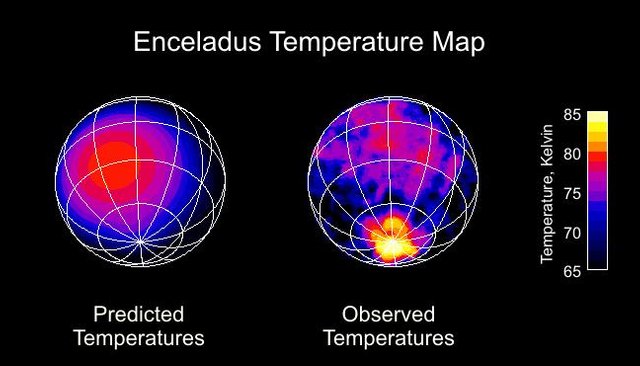
Thermal imaging has shown that the southern pole of Enceladus is much hotter than previously thought possible. The spectrometer onboard the Cassini probe studied the eruptions from the roughly 80 mile long blue-green ‘tiger stripes’ from which the plumes of water vapor are ejected. Scientists estimated that the area should generate 1.1 gigawatts of heat, but measurements indicated an amazing 15.8 gigawatts – five times that of Yellowstone National Park.
What is believed to fuel this heat power are the tidal forces caused by the gravitational pull of Saturn and the other moons, some latent radioactivity, and an as yet unknown additional heat source.
Possibility of Life
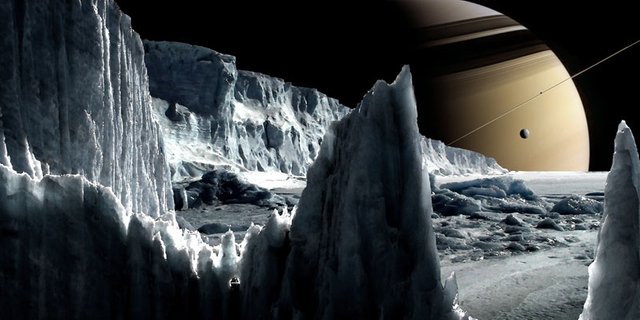
This unknown heat source has led some scientists to theorize that Enceladus undergoes periods of heating and cooling. Could life be created and survive given those changes?
But given the data we have, it seems that it is a possibility – maybe the best one we know of so far. Based off the size of the silica grains scientists think that there is a heat source of approximately 200F, similar to hydrothermal vents, they know the basic building blocks of life are present, and they can assume that there is liquid salty water.
"Hydrothermal systems could fulfill the three criteria to sustain life: energy, nutrients and liquid water," Hsu said. However, he said it was not clear if Enceladus was stable enough over geological timescales to allow life to evolve.
It seems like the life creating checklist as we know it can be marked as present on Enceladus – a prime candidate, but more conclusive data would be great.
Conclusion
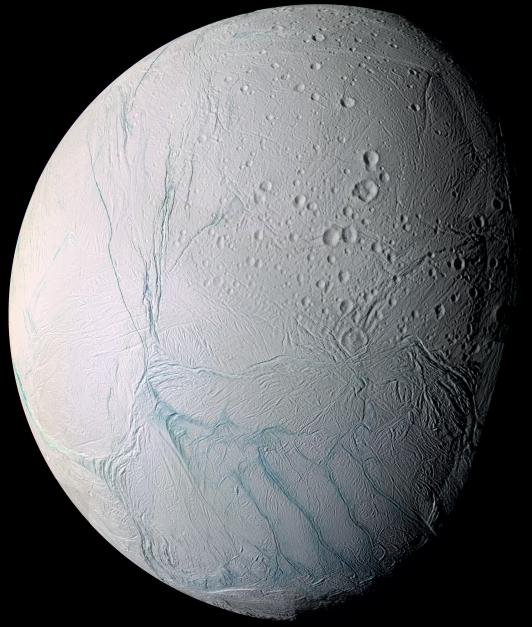
Cassini is scheduled to end its mission in 2017. The list of discoveries it has made on Enceladus has led to proposals for another probe to be sent as well as missions of robotic landers to this small world.
Some missions proposed but not funded include:
- Enceladus Life Finder (ELF) – Probe with more sophisticated equipment to fly through the plumes and collect data.
- Journey to Enceladus and Titan (JET) – Send a probe to each of those two moons, the probe to Enceladus would be 1000x more sensitive to analyzing molecules from the plumes than Cassini was.
- Life Investigation for Enceladus (LIFE) – Gather particles from those plumes and return to Earth for extensive analysis.
- Testing the Habitability of Enceladus’s Ocean (THEO) – An orbiter that would directly sample its water plumes to study its internal habitability and to search for biosignatures.
- Enceladus Explorer (EnEx) - Orbiter and lander in the form of a nuclear powered melting probe.
The discovery of life not of Earthly origin would be the greatest discovery of all time. If extraterrestrial life could be found within our own solar system it will prove that life is more common than we think. We owe it to the future of humanity to send scientific missions to ascertain the answer:
"Is there other life out there?"
Sources
Icy Saturn Moon's 'Tiger Stripes' More Extensive Than Thought
Ocean on Saturn Moon Enceladus May Have Potential Energy Source to Support Life
Hidden Ocean Found on Saturn's Icy Moon Enceladus, Could Potentially Support Life
Hot Springs on Saturn's Moon Enceladus Powered by Hydrothermal Vents
Read about the possibility of life on Jupiter's moon, Europa
Icy Saturn Moon's 'Tiger Stripes' More Extensive Than Thought
Ocean on Saturn Moon Enceladus May Have Potential Energy Source to Support Life
Hidden Ocean Found on Saturn's Icy Moon Enceladus, Could Potentially Support Life
Hot Springs on Saturn's Moon Enceladus Powered by Hydrothermal Vents
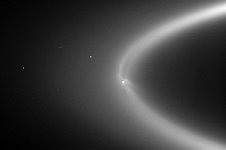
This information gets me all so giddy. Apparently they have made new discoveries about Europa. Be awesome if we can get there with more probes soon
:-D You can read my post about Europa here: https://steemit.com/space/@getonthetrain/europa-the-moon-that-could-contain-life
I have read the first and second para looks interesting. I will read it completely
Really nice and interesting post!
Thank you very much @justtryme90 :-D
I feel stupid for not even having heard off Enceladus before. Thanks for the daily dose of wisdom, yet again!
No one can know everything, so no worries.
Very nice post, well documented and thanks for the references! I notice that I have lost the track about space; am totally outdated... ;)
Hah, yea it's starting to get interesting out there - and I am perfectly fine with that!
It seems we are definitely NOT alone! :)
Fantastic post, @getonthetrain. Well written and structured.
Well done!
Thank you very much my friend. :)
Enceladus is certainly a main point of interest and I really hope these future missions can get funded. Great post!
Especially since it takes 7+ years to travel there at the current rate, so best to get working on it right away.